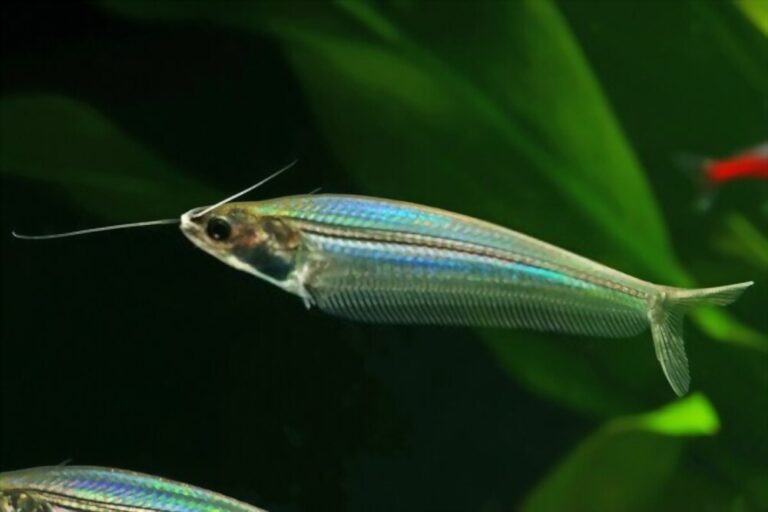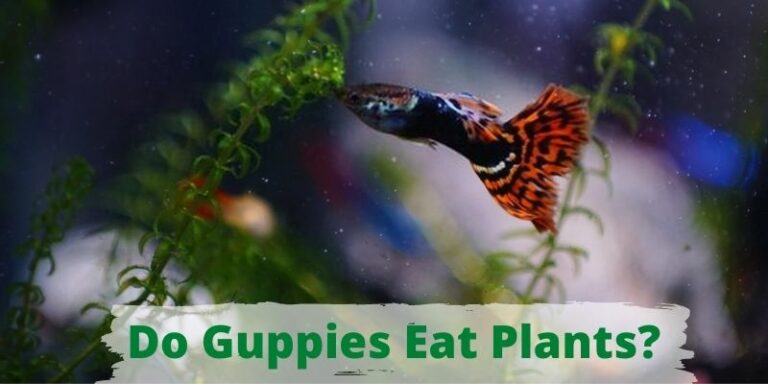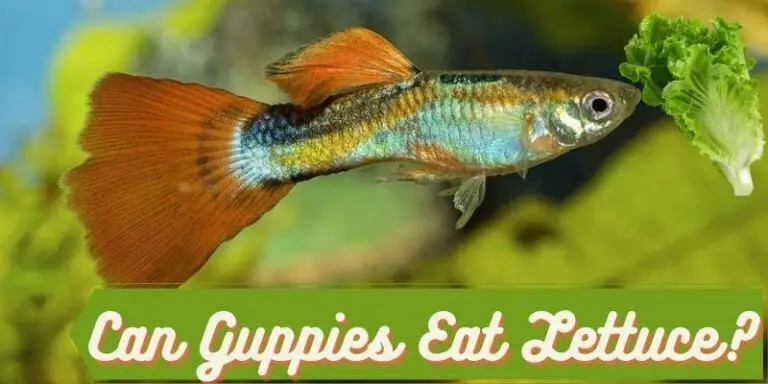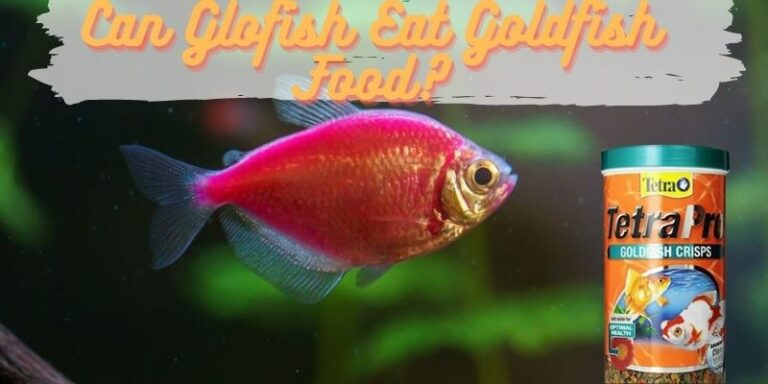What Do Small Fish Eat? (Foods & Feeding Tips)
We need to categorize small fish into two types before talking about what do small fish eat. Especially, the small adult fish and the small babies that are newly hatched. Even though this question still can’t be answered as simply as you may think.
To the aquarists out there, you guys might have come across certain store owners who may make you believe that this ‘ABC’ type of fish formula is available foods for fish and can be fed to each type of fish, right? But the reality is quite different.
Different kinds of small fish feast on different foods, and it all depends on the climate zone of the fish’s natural habitat, the genetics of the digestive system, and the size of the fish.
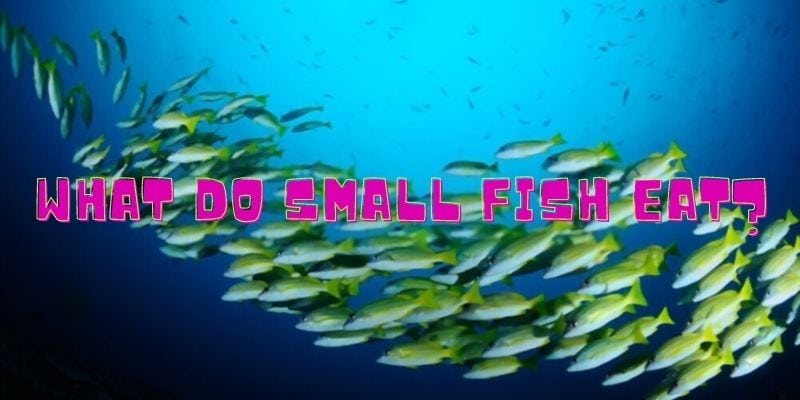
Depending on these factors, fish are further classified into carnivores, omnivores, and herbivores.
Some fish are scavengers, and they feed on each and everything compatible with their capacity to eat. Newly hatched juveniles will feed on very small or micro items, and these mainly include planktons, diatoms, and small algae.
What do small fish eat in the wild?
In Ocean
About 96.5% of the earth’s total water is in oceans. In such a huge mass of water covering 71% of the earth’s total surface, food chains and food webs are quite cumbersome. In this plethora of eating and being eaten, small fish play a very crucial role.
From getting fed by a large number of gigantic predators to feeding on small creatures like planktons, algae, small crustaceans, worms, and mollusks, you can not deny the importance of small fish in the convoluted web of food.
As far as the eating behavior of the small fish is concerned, it varies greatly. For example, some fish are what we call forage or baitfish, they live in heavy shoals, and they are a great source of food for large predators.
Their schools are often huge, and with cumulative movements within the shoal, they keep on thriving and surviving despite being at risk of being attacked anytime.
These forage fish are present at the very base of the food chain, just above the plants and planktons, which is why they are great sources of energy transfer within the ecosystem.
Then there are small reef inhabitants which are found in low to moderate depths. The reefs and the surrounding areas are highly enriched with vegetation and a variety of animal life.
The small herbivorous fish inhabiting these less deep areas forage on algae and marine plants while the meat-eaters feast on small creatures like small arthropods, crustaceans, mollusks, worms, zooplankton, and even other small fish as well. Small carnivorous fish also include ambush and stealth predators.
In freshwater
Freshwater small fish have somewhat different feeding requirements than saltwater due to different salinities, temperatures, and food availability. However, in the wild, small freshwater fish mainly inhabit those heavily grown in vegetation.
Underwater vegetation is home to a variety of small creatures and gives shelter to the fish as well. The herbivorous fish forage on vegetation use as shelter and hideouts from predatory fish.
Others will feed on those small insects, crustaceans, worms, and their larvae and detritus. Apart from vegetative areas of water, some small fish also swim in open waters and travel miles with the flow. They are mostly scavengers and forage all along their journey.
What do small fish in the ponds?
Small pond fish are primarily omnivores, the most popular small fish in the backyard pond are goldfish, fathead minnow, archerfish, bluegill, pumpkin seeds, and other small scavenging fish.
Small fishes in the pond feed on almost everything offered to them externally, and vegetation grown in the pond and other small insects, worms, and their larvae naturally residing there.
The ponds account for a mini-ecosystem that is sometimes self-sufficient and offers a cyclic flow of food and energy to some extent.
For instance, plants or algae growing in the ponds offer the fish to forage on them, which grow back again if not outpaced by the feeding speed of the fish.
Moreover, there are commercially prepared pond foods like flakes and pellets, which most of these fish enjoy as a part of their food staple.
To keep them thriving, it is always advised to pond owners to keep the menu lavishly varied. The most important thing as far as pond feeding is concerned is taking into account the weather conditions.
The cold weather dramatically lowers the fish’s metabolism and hence activities. You need to pause feeding them or feed them only a few times a week until the temperature starts to get normal.
Furthermore, there are special winter prepared foods to help ease fish’s digestion. In summers, the pond fish need more protein in their diet to keep them active.
Generally, frozen and freeze-dried foods, along with the live ones on an occasional basis, are good to go.
Feeding small fish at home
Feeding small fish at home can prove to be tricky at times, especially when you cannot figure out the feeding preferences of your fish. In most cases, small fish are fed with commercial fish foods as a staple of their diet.
Commercial fish foods include fish flakes, pellets, and specially prepared formulas for particular fish species.
Although these flake foods carry all the required nutritional elements that the fish need regardless of the fish being meat-eater or veg eaters, this diet needs to be supplemented with the variety of food they are supposed to eat in their natural habitat.
The occasional addition of these varied supplements not only boosts up fish’s metabolism but also keeps them actively engaged.
This brings me to what variety should be added in fish’s meals and in what quantity. Well, all this depends on whether the fish is vegetarian, carnivorous, or omnivorous. For strict predatory fish, it is best to feed them meaty live or frozen food more often.
You should Prefer the frozen foods over live ones to rule out the possibility of infectious proliferation. Live foods for aquarium carnivores are raised in poor conditions, and they are prone to spread infectious diseases when eaten.
As far as omnivorous fish are concerned, we often get to see two types: the ones that need more veg content than meaty content and others that are vice versa. High-quality flakes serve the purpose greatly for omnivores.
However, the best is to feed them one feeding of frozen meaty food after two feedings of the flakes.
For herbivorous fish, specially prepared vegetable flakes and algae wafers are available. But if you want to have them share what’s on your table, then be sure that you are not feeding hard terrestrial veggies to tropical fish.
Cruciferous vegetables like broccoli florets and cauliflower are suitable for small fish. Oxalate-containing vegetables must be fed in limited amounts on limited occasions.
Small fish food list
Feeding your small aquarium fish is a challenging task to accomplish. Because of not just the variety in the species but also the difference in the habitats that they are coming from.
Freshwater fish are more easily fed than saltwater fish, and it is a lot easier to mimic freshwater fish natural food than saltwater fish. Before compiling a small fish food list, we tank into account their feeding nature. So, it goes like this.
Herbivores
Herbivorous fish happen to be grazers. In their wild environment, they tend to forage almost all the time on herbaceous growths and algae grown on live rocks. So their feed at home must resemble what they would possibly get in the wild.
01. Terrestrial Vegetables: Much herbivorous fish love to eat them. They are given to the fish after boiling to make it soft.
We have concluded from our personal experience and many fellows that terrestrial vegetables like spinach and romaine lettuce should be given only occasionally and in a small amount to the fish that are solely algae eaters.
2. Dried Algae: Dried algae comes in the form of thin layers. These are broken up and can be fed to the fish accordingly.
3. Algae wafers: Algae wafers are highly nutritious and contain various nutrients that greatly supplement all the fish’s nutritional needs.
These wafers are made of algae, different vegetables, and shrimps as well. Algae wafers are a good source of protein along with carbs in bulk.
4. Live algae: Provide your tank with an abundance of live rocks for your herbivorous fish to graze on. This will significantly impersonate their natural foraging needs.
5. Flakes for herbivorous fish: There are high-quality flakes specially prepared for the herbivorous fish. These flakes would make up the better part of their everyday diet.
Omnivorous Fish
These are probably the most straightforward kind of fish to deal with. Their feeding requirements are not strictly centered on a particular type of feeding.
Instead, they can bed fed with a diversity of food ranging from meaty to herbaceous and detritus to whatsoever their feeding-compatible. It would be best if you provide them the given foods:
01. Commercial foods: High-quality omnivorous flakes are versatile and nutrient-rich foods highly suitable for almost all kinds of aquarium fish except for the strict meat-eaters.
Flakes account for dietary staples and are fed daily. They are the best supplement with protein diets in equal ratios. Commercial foods also come in various dried forms, including Pelletized foods, tablets, granules, and wafers.
2. Frozen foods: A variety of food that is quick to decompose is preserved by the storage procedures involving extremely low-temperature mechanisms. These foods include daphnia, shrimps (Mysis and brine), and bloodworms.
There is a great variety of frozen foods, and they are readily available in local fish stores. You should prefer Frozen foods over live ones to fulfill fish’s protein requirements.
The reason is that frozen foods do not contain infectious or parasitic elements that live foods may carry and pass on. You should give frozen meaty foods to omnivorous fish as a part of occasional feedings, let’s say twice or thrice a week.
3. Live foods: Live foods for small fish include bloodworms, earthworms, sludge worms, baby shrimps. For juvenile fish, micro worms and infusoria would be of great help.
By keeping in mind the possibilities of infection proliferation, give live foods only as a treat. Say every two weeks apart.
How often and how much to feed small fish
A number of feeding per unit a particular amount of time is called feeding frequency, and it is of great importance to determine the fish’s overall well-being. Small fish have a small stomach. How Often To Feed Fish & How Much? A Proper Fish Feeding Guide
The capacity of their stomach to hold food may vary from species to species. Some fish have a very high metabolic rate, while others take pretty much a long time to digest the food.
Many hobbyists make a widespread mistake, that is to check on their fish every time whether they are hungry or not. If you always ask your little buddies, “they do you need food,” I don’t think you would get any NO.
Generally, the fish are opportunistic feeders, which means they tend to eat whenever the food is available.
As far as aquarium fish are concerned, they learn to crave the food whenever the aquarium owner is around, which can mislead the owner into thinking that the fish is hungry. But the things are not how they seem to be.
There is a general rule of thumb that applies to almost all of the small fish species: Feeding the fish once a day and fish can finish within 5 minutes or twice a day.
The amount that fish can finish within 2 minutes is more than enough. For herbivorous fish, things are pretty different, and they need to eat more often.
Precisely, three times a day with flakes, algae wafers, dried algae, and boiled leafy vegetables. Feeding shouldn’t last more than 3 minutes.
Do small fish eat plankton?
Yes, small foraging herbivores like capelin fish do eat Planktonic organisms in the wild. The newly hatched fry of various species is also known to feed on planktons.
What does a baby fish eat?
In their wild habitat, baby fish feed on small microscopic organisms, algae, and tiny larvae. They also feed on planktons. Whereas aquariums are best to keep on high-quality flakes ground into a powder.
Do you have to feed baby fish?
Yes, in captivity, the nutrient-scarce limited amount of water has nothing much to offer to a fry or baby fish. Therefore, you need to provide your baby fish a nutrient-rich diet. We recommend starting with infusoria and grounded flakes.
